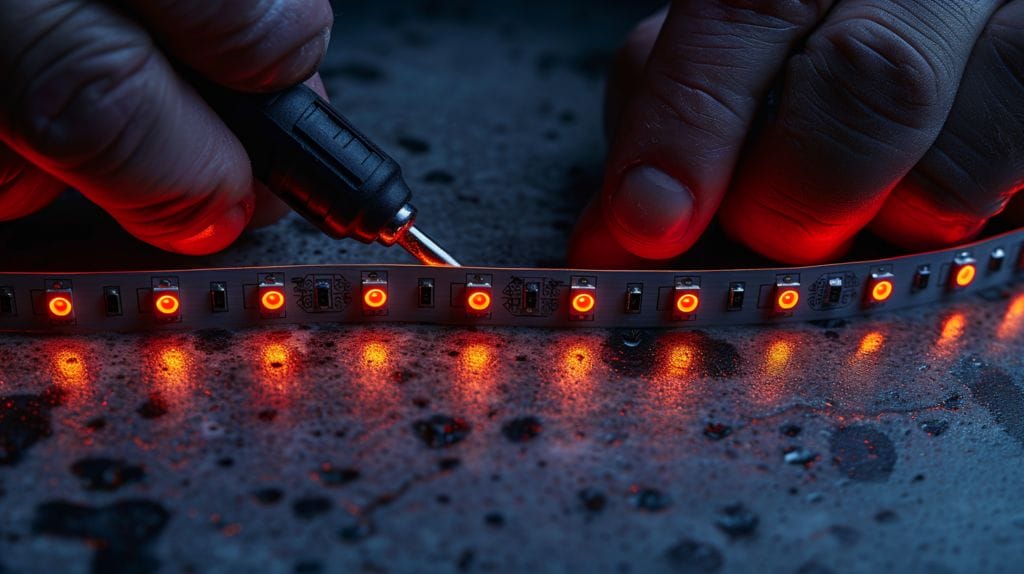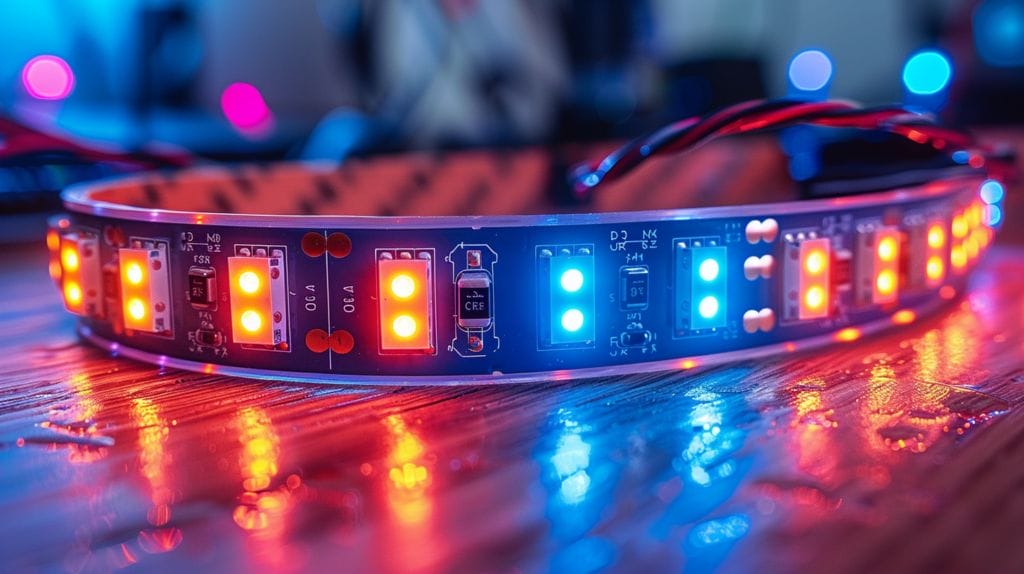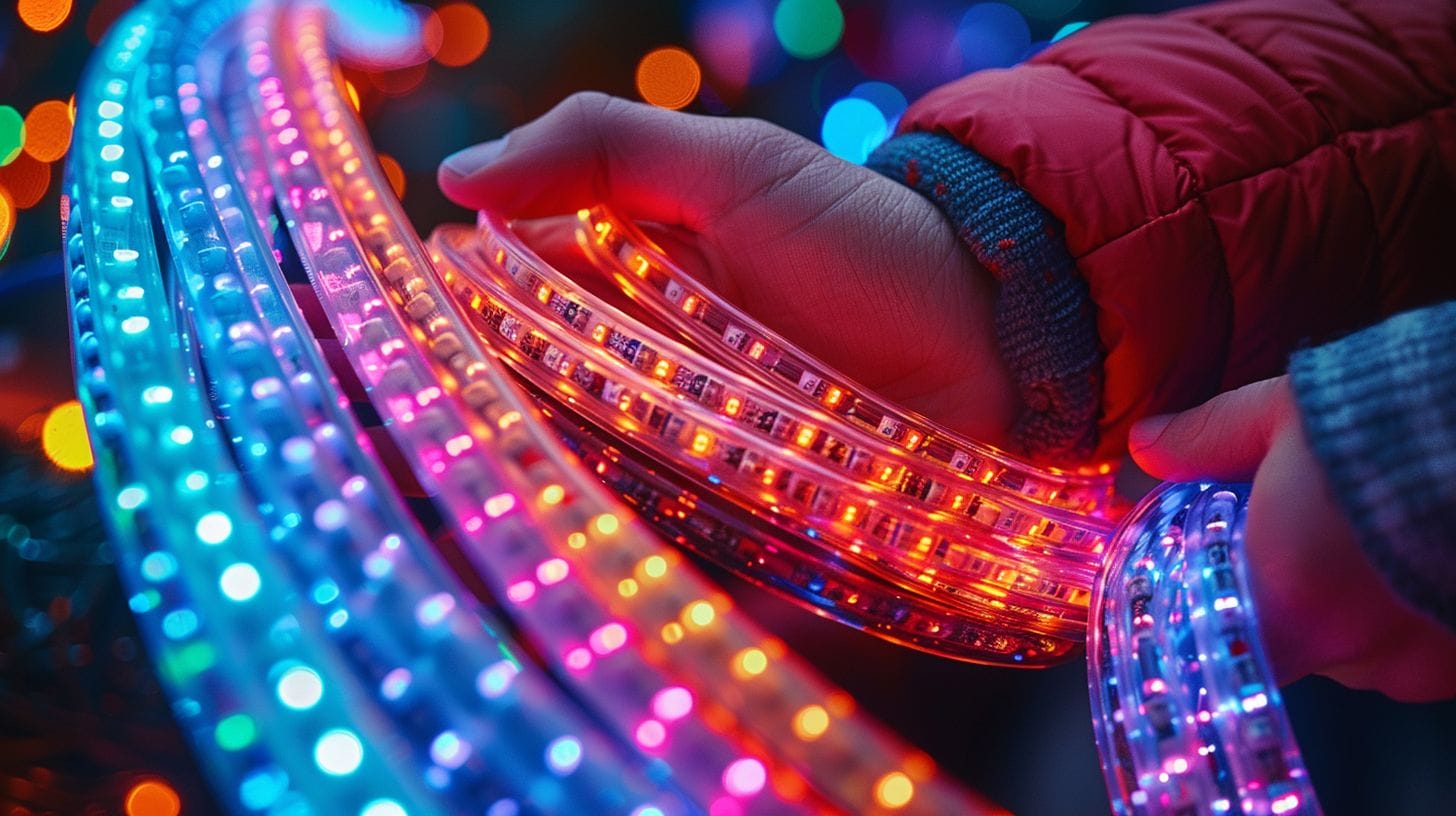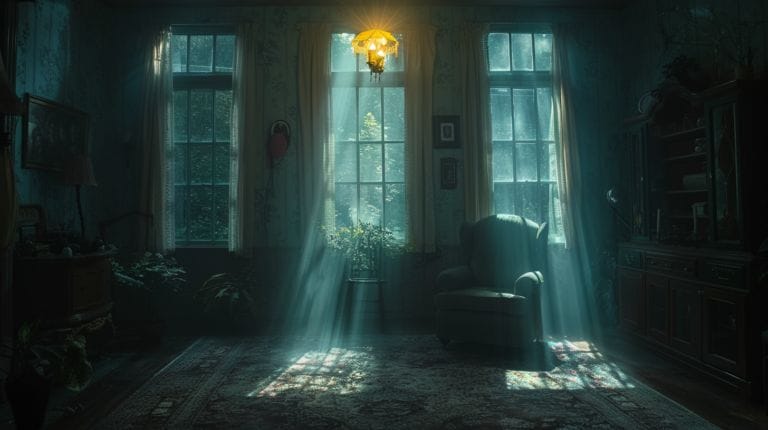How To Connect LED Lights Together Without Connector
Imagine you’ve got two LED light strips but no connectors in sight. Now, how do we go about joining them seamlessly?
Well, there’s a method that’s both practical and efficient, all without the need for fancy equipment. But before we unveil this solution, let’s explore the possibilities that lie in our How To Connect LED Lights Together Without Connector guide.
Curious to find out more about this handy technique?
Key Takeaways
- Cut LED strips accurately and connect using conductive tape or wire nuts for a secure connection.
- Ensure proper alignment of copper pads and apply pressure to create a stable connection without soldering.
- Choose a suitable power supply and monitor connections regularly for effective LED strip functioning.
- Utilize adhesive tape or other soldering-free methods to easily connect LED strips without the need for connectors.
The Basics of Connecting LED Strips Together Without a Connector

Conductive tape is a secure and efficient tool for connecting LED strips without soldering. Equipped with adhesive backing, itconnecting LED stripsch it to the exposed conductors on the LED strips, establishing a reliable electrical connection without the need for soldering or additional tools.
Alternatively, wire nuts can be twisted onto the exposed conductors of LED strips to create a stable connection between LED strips. This method is slightly more involved than using conductive tape, but it provides a durable connection that’s easy to undo if needed.
Each method for connecting LED strips, including using LED tape and soldering LED strips, has its advantages and limitations, so choose the one that best suits your specific needs and preferences.
Step-by-Step Guide on How to Connect Two or Multiple LED Strips Without Connectors

To successfully connect two or multiple LED strips without connectors, prepare each strip by ensuring the exposed conductors are clean and free of any debris or residue, an essential step in the process to learn how to connect LED. Once you have clean conductors, follow these steps to connect the LED strips:
| Steps | Instructions |
|---|---|
| Step 1: Cut LED Strips | Measure and cut the LED strips to the desired length. |
| Step 2: Align Strips | Align the copper pads of the LED strips together, ensuring you want to connect them securely. |
| Step 3: Apply Pressure | Apply pressure to firmly connect the copper pads and insulate them well after soldering LED strips. |
| Step 4: Secure Connection | Use adhesive tape to secure the connection in place and insulate the area where you have cut the LED strip light. |
Powering Your Connected LED Strips Without Using a Connector

We can power our connected LED strips effectively without the use of a strip connector by understanding the role of the power source. When connecting LED strips without soldering or connectors, it’s crucial to consider the power supply and connection points to ensure a seamless operation and prevent short circuits.
Here are some key points to keep in mind:
- Choosing the right power supply: Select a power supply that matches the voltage requirements of your LED strips for optimal performance, ensuring all connections between LED strips are secure.
- Properly connecting the LED strips: Make sure to securely connect the LED strips to the power source without compromising the connection points.
- Ensuring a stable power supply: Maintain a stable power supply to prevent flickering or dimming of the LED strips, ensuring you have a specialized LED power supply.
- Regularly checking the connection points: Periodically inspect the connection points to avoid any loose connections that could disrupt the power flow and compromise your lighting project, potentially causing short circuits.
- Monitoring the power supply: Keep an eye on the power supply to ensure it meets the power demands of the connected LED strips.
Benefits and Challenges of Connecting LED Strips Together Without Connectors

Connecting LED strips without using connectors presents both benefits and challenges that users should be aware of, highlighting various methods for connecting LED strips, including flexible LED strips, and several LEDs for optimal brightness.
When exploring this method, it’s essential to consider the type of LED strips being used, the connections between the strips, the possibility of achieving LED strip lights without soldering, and the tool-free methods that exist for this purpose.
Here is a table summarizing the benefits and challenges of connecting LED strips without connectors:
| Benefits | Challenges | Methods Exist |
|---|---|---|
| Easy and quick connection process | Ensuring secure and stable connections, taking precaution to avoid loose wires. | Clip-on connectors |
| Flexibility in adjusting the layout | Risk of poor electrical connections | Adhesive tape |
| Cost-effective solution | Limited load capacity necessitates choosing the right LED power supply. | Magnetic connectors |
Conclusion
We’ve learned various methods for connecting LED lights together without a connector, including the use of different connectors to facilitate plug and play setups. These methods include using soldering or adhesive tape to connect LED strip lights together, or employing flexible strips for more complex lighting designs. By following the step-by-step guide provided, you can easily connect two or multiple LED strips without the need for connectors, ensuring a continuous circuit.
Remember to consider the benefits and challenges of this method, like soldering for a permanent connection or using different connectors for flexibility, when planning your lighting project. Ensure that you power your connected LED strips properly for optimal performance to create a continuous flow in your lighting design.
Happy lighting with LEDs! Enjoy the added brightness and illuminate your space as you wish, making sure to connect the wires together securely.
Frequently Asked Questions
How can I connect LED lights together without a connector?
You can connect LED lights together without a connector by using methods such as using wire nuts, conductive tape, or strip-to-strip wire connections, demonstrating that connecting strips without connectors is possible.
What are the benefits of connecting LED strips without soldering?
Connecting LED strips without soldering provides an easy way to customize your lighting setup, allows for flexibility in rearranging your lights, and eliminates the need for specialized tools or skills.
What are some ways to connect LED strips without traditional connectors?
Some methods to connect LED strips without traditional connectors include using gapless pin connectors, conductive tape, wire nuts, or terminal blocks, highlighting how connecting several LED strips without connectors is possible.
Can I connect two LED strips without soldering?
Yes, you can connect two LED strips without soldering by using compatible connectors, wire nuts, or conductive tape.
How do I connect LED strips without soldering using wire nuts?
To connect LED strips without soldering using wire nuts, simply twist the wires of the LED strips together and secure them with a wire nut for a reliable connection, demonstrating a practical approach to linking LED strips.







